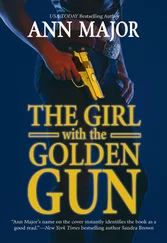I propose, for example, to abolish all barriers to the interstate transportation of firearms. Wouldn’t that be nice, those of you who hunt or who for professional reasons feel a need to carry a gun? (I refer here to private detectives, bodyguards, and the like, not hit men.) In fact, I suggest that the nation’s first step ought to be the wholesale repeal of every state, county, and municipal firearms regulation currently on the books. The NRA is quite right in pointing out, ad nauseam, that New York and Washington, D.C., have some of the toughest gun-control laws in America, and two of the highest per capita homicide rates. Erase these ineffective regulations—but immediately replace them with a formal, rational federal code that at last recognizes guns for what they are: the single most dangerous, socially costly, culturally destabilizing consumer product marketed in America.
Herewith, the Life and Liberty Preservation Act, its provisions divided into three parts governing the distribution, purchase, and design of firearms:
I. DISTRIBUTION
Any serious effort to halt the mass migration of weapons to illegal hands must first concentrate on the firearms distribution network, in particular, the role played by retail dealers. As things stand now, it is simply too easy to get a license to buy and sell guns. As a first step, Congress should repeal all provisions of the McClure-Volkmer Act, except the machine-gun ban.
The Life and Liberty Preservation Act would then:
♦ Sharply increase the cost of the basic gun-dealer license to $2,500 and designate this a one-time business-entry fee. This alone would sharply reduce the number of Americans who now hold Federal Firearms Licenses. At $30 the license has proven too tempting for would-be felons to pass up.
♦ Require that before receiving a license, a prospective gun dealer first present proof that he has met all local and state regulations governing the operation of a business. For example, he would be required to show proof that his dealership satisfied all local zoning requirements.
♦ Require every dealer to take a course designed to familiarize him with all federal firearms laws, with the ways in which buyers try to evade the laws, and with proper techniques for protecting firearms and ammunition from robbers and burglars. The law further would require that dealers demonstrate a basic working knowledge of firearms and firearms law by passing a licensing examination, as doctors and lawyers must. The dealer would have to attend a refresher seminar every three years to revalidate his license. These seminars would brief dealers on new changes in federal regulations, new court precedents, and the latest patterns in firearms trafficking.
♦ Provide, for the first time, an objective definition of what it means to be “engaged in the business” of dealing firearms. Any dealer who wished to retain his license would have to prove that in his first year of operation he had revenue from gun sales of $1,000 or more. As proof, he could simply file a duplicate of his dealership’s annual IRS filing.
♦ Establish a scale of penalties for failure to keep accurate records. If, for example, ATF discovered that a dealer had failed to record the disposition of firearms sought in three ATF traces conducted in any one year, ATF could immediately revoke his license, subject to administrative appeal. Any dealer who refused to cooperate with an ATF trace request, even once, would likewise lose his license.
♦ Require mandatory inspection of the business premises of all new licensees. The dealer’s license would remain provisional until the dealer passed such an inspection, or until six months had elapsed, whichever came first.
♦ Require that consumers who buy guns from private sellers fill out a form 4473, just as they would if buying from a licensed dealer. In this case the sellers would send a copy directly to their regional ATF office. (Notice I said regional office—the same place where multiple-purchase forms currently end up. I emphasize this to calm those who may be inclined to leap from their chairs and condemn this measure as an effort to build a central database of gun owners.) The actual transfer of the weapon would take place in the presence of a licensed dealer. Such a service would not be that different from the role now played by dealers who act as middlemen in mail-order sales of firearms. Consumers cannot receive mail-order firearms directly, but must designate a local dealer, who then formally transfers the weapon, keeps the form 4473, and records the transaction in his acquisition and disposition book. Dealers should not object to my proposal. The new purchaser is highly likely to turn around and buy ammunition and other accessories from the dealer.
♦ Require that ATF issue to licensed dealers a primary display license and a set of formal, embossed duplicates to be signed by the dealer and notarized before being mailed to the distributor. Distributors in turn would be required to verify the dealer’s license number and name before sending him any guns. A distributor would accomplish this by calling a toll-free number at ATF’s licensing center, punching in his own license number, waiting for a prompt, then entering the dealer’s number and name. A tone would signal that the license was valid. An ATF computer would keep a digital record of the call and file it for later retrieval when inspectors got around to doing their routine compliance audit of the distributor’s business. Manufacturers would likewise have to verify the license numbers of distributors.
The primary benefit of these distribution regulations would be to shrink the number of licensed dealers to a core group of those willing to take the time and energy to establish bona fide businesses. These dealers, in turn, would benefit from reduced competition and by capturing as customers those consumers who became kitchen-table dealers just to buy guns at wholesale prices. Dealers who remained in the business would have a greater incentive to keep good records and to turn away clearly questionable buyers. Private sellers too would be less inclined to sell their guns to such buyers. The measures, moreover, would greatly bolster the tracing network.
It would be unfair, of course, and exceedingly naive to expect that dealers would suddenly become priestly arbiters of firearms distribution, rejecting customers who looked felonlike or who sweated too much or whose eyebrows twitched a tad too often.
My law would at last remove from their shoulders the weighty burden of screening customers through a measure that many ardent gun owners tell me they would be more than willing to accept….
II. PURCHASE
The Life and Liberty Preservation Act would require that all prospective gun buyers age twenty-one or over first acquire a license-to-purchase. Yes, we are talking here about licensing gun owners. To qualify for the license, each consumer would have to pass a criminal background check and take an ATF-certified course covering firearms law, the use of deadly force, and safe gun-handling, and including lectures on the most common forms of firearms accidents, the importance of cleaning a gun, and how best to keep that gun out of the hands of children. It would be nice, but certainly not mandatory, if such a course also included a film or some other means of demonstrating the damage real bullets do to real people. Scare films of the kind I envision here were a staple of driver’s education classes at my high school: one image, of bodies strewn around a head-on wreck caused by a drunk driver, stays with me even now just as vividly as ever.
These purchase provisions also would:
♦ Require license applicants to demonstrate minimum proficiency with a handgun and a rifle. An appropriate firearm would be supplied to them for use during their training course. (Many firing ranges already provide rental guns, even machine guns.) Licensees would have to renew their licenses and undergo a new background check every five years, but the renewal process would be accomplished simply by mailing ATF a form attached to the original license. ATF would charge a licensing fee meant to recoup some of the program costs. The license would, of course, include a photograph of the holder, and such vital statistics as his age, height, weight, and the color of his eyes.
Читать дальше
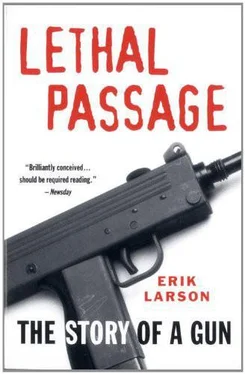
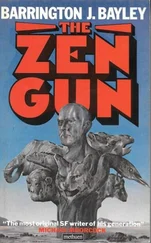
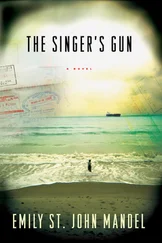

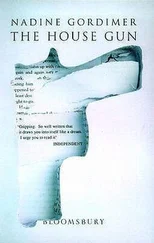



![Ричард Деминг - Whistle Past the Graveyard [= Give the Girl a Gun]](/books/412176/richard-deming-whistle-past-the-graveyard-give-t-thumb.webp)
